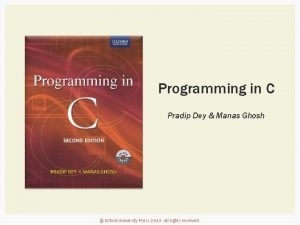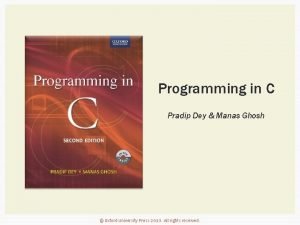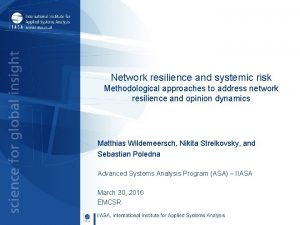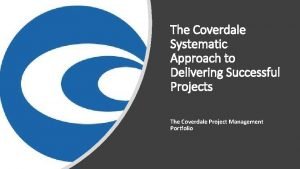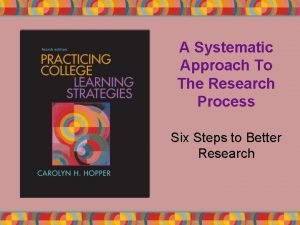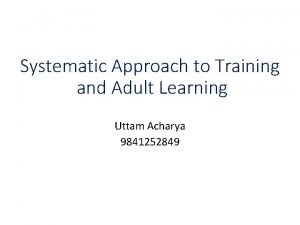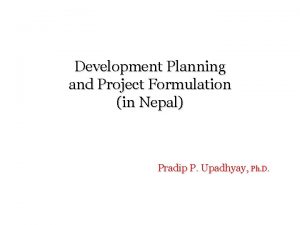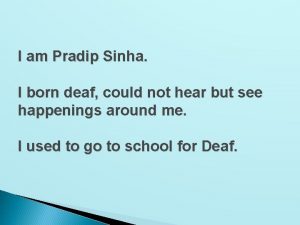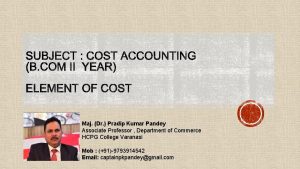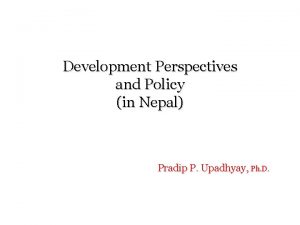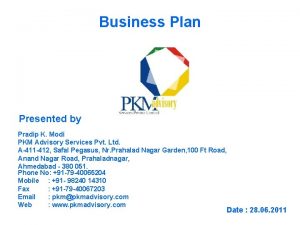Welcome A Systematic Approach Dr Pradip Neog Director






























- Slides: 30

Welcome A Systematic Approach Dr. Pradip Neog Director EEI(NE Region), AAU, Jorhat

CONTENTS ASA Ø Understanding the task Ø Aim settingInformation collection and processing Ø What Has To Be Done Ø Plan Ø Action Ø Review COVERDALE Ø Observation Ø Process Planning Ø Listening Ø Proposing Ø Support Development Ø Feedback

Methods � Task Cycle (Group Exercise+ Reviewing+ Sharing) � Coaching � Input through short lecture � Individual Assignment

A Systematic Approach Ø AIMS § Purposes: ü Why ü Who benefit Contd. .

A Systematic Approach Ø Information ü Facts ü Ideas ü Skills ü Experience ü Resources ü Risks & Alternatives Contd. .

A Systematic Approach Ø What Has To Be Done Ø Plan Ø Action Ø Review

AIMS � Information � WHTBD � Plan � Action � Review Ø Review, give new information leading into the next cycle

Useful question when establishing Aims q Purpose v “Why are we doing this job? ” v “What is the job for? ” v “What purpose will it serve”

Useful Question when establishing Aims q. End Product v“What will be end up with” (Visualising end product)

Useful Question when establishing Aims q Success Criteria v“How will our achievements measured? ” v“How will we judge if our results are satisfactory? ”

Know by others Unknown by Others Public Area Information Known by Self & Others Blind Area Information Known by Other but not by self Cancelled Area Information Known by Self but not by other Unknown Area Information Unknown by Others or self Known by Self Unknown by Self JOHARI’S WINDOW

Task Why? Causes Purposes “Because of these cause in the past” “In order to fulfil these purpose in the future” Analysis Hindsight Imagination Foresight

Course Aims To take a fresh look at how we work together with other people To practice q Getting things done effectively in cooperation with other people. q Contributing to the formation of an effective team. q Identifying and using other people’s skills q Deliberately learning from experience.

Practice of Effective Aiming q Be as specific as practicable q Aim at highest achievable level q Match your aiming as per task q Assess capacities positively q Aim for both material non-material benefits q Don’t ignore intrinsic non-material benefits

Practice of Effective Aiming q Be prudent to judge worth of perceived benefits q Be careful not to elude primary outcome q Don’t forget purpose in wind while determining standards of outcome q Be rational in determining efficiency criteria

How things are said has an effect Balanced thought and action � Pointing out difficulties � Asking questions � Presenting alternatives � Posing dilemmas � Suggesting ways out of problem � Building on ideas � Making positive actionable proposals Source: COVERDALE

Task q. Accounting q. Engineering q. Brewing “He’s a brilliant computer man / Scientist. . . Process q. Setting clear aims q. Working systematically q. Managing time “. . . But he never listens to anyone else’s ideas”


Level of Management Aspiration High Resource Time Risk Plan Work Low

How things are said has an effect Action: q Making positive actionable proposal q Supportively developing another’s idea q Suggesting ways out of a problem

How things are said has an effect Stop & Discuss q Pointing out difficulties q Asking questions q Presenting alternatives and dilemmas

How to listen �What did he say? �What does it mean? �How does it fit? �Can I support it? �What should I say?

Listening �“Hearing is with the ears but Listening is with the mind” �“You cannot listen if you are talking and if you are talking you are not learning”

Active listening �What did they say? �What does it mean? �How does it fit? �Can I support? �What shall I say?

Listening �“A good listener is not only popular but learns much” �“Learn to listen, opportunity sometimes knocks very softly”

Observation • • Listening Seeing Watching Making notes WHAT IS HAPPENING? HOW WHAT WE GET AWARENESS USE PURPOSFULLY & ATTENTIVELLY FOR OUR OWN USE PURPOSES: • To be more skillful in observation • To pick up new ideas from others • To give feedback TO GIVE FEEDBACK



SUCCESS CRITERIA Purposes Need to be clear who Quantity is the job for? What is the job for? Subjective Objective Lots Plenty Many 20 <10 >4 Quality Nice ones good ones • Exactly the same paper • Staples at top left hand corner • Straight edges Comparative Similar Exactly the same in every respect Cost Cheap Reasonable cost Budget of 40 rupees 10 paise each pad Time As soon as possible By August 30 th, 2015

Thank you…
 Dr. pradip kumar khastagir
Dr. pradip kumar khastagir Pradip dey and manas ghosh programming in c
Pradip dey and manas ghosh programming in c Pradip dey and manas ghosh programming in c
Pradip dey and manas ghosh programming in c Sanjiv sinha
Sanjiv sinha Network resilience a systematic approach
Network resilience a systematic approach Systematic name
Systematic name Coverdale systematic approach
Coverdale systematic approach Systematic approach to research
Systematic approach to research A logical systematic procedure for solving a problem
A logical systematic procedure for solving a problem The systematic approach to training
The systematic approach to training Welcome welcome this is our christmas story
Welcome welcome this is our christmas story Shower approach marketing
Shower approach marketing Tony wagner's seven survival skills
Tony wagner's seven survival skills Bandura's reciprocal determinism
Bandura's reciprocal determinism Multiple conflict
Multiple conflict Datagram approach
Datagram approach What is research
What is research Cognitive approach vs behavioral approach
Cognitive approach vs behavioral approach Approach to system development
Approach to system development Actor director musician
Actor director musician Director
Director Miercurea ciuc penitenciar
Miercurea ciuc penitenciar Howard davies (director)
Howard davies (director) Koshwahini mahakosh
Koshwahini mahakosh Asigurare de sanatate europeana pret
Asigurare de sanatate europeana pret Cisco threat intelligence director
Cisco threat intelligence director English comic actor and film director
English comic actor and film director Bartholomew cubbins director
Bartholomew cubbins director Kill the director ukulele
Kill the director ukulele Vestimenta del teatro romano
Vestimenta del teatro romano Single window director
Single window director

